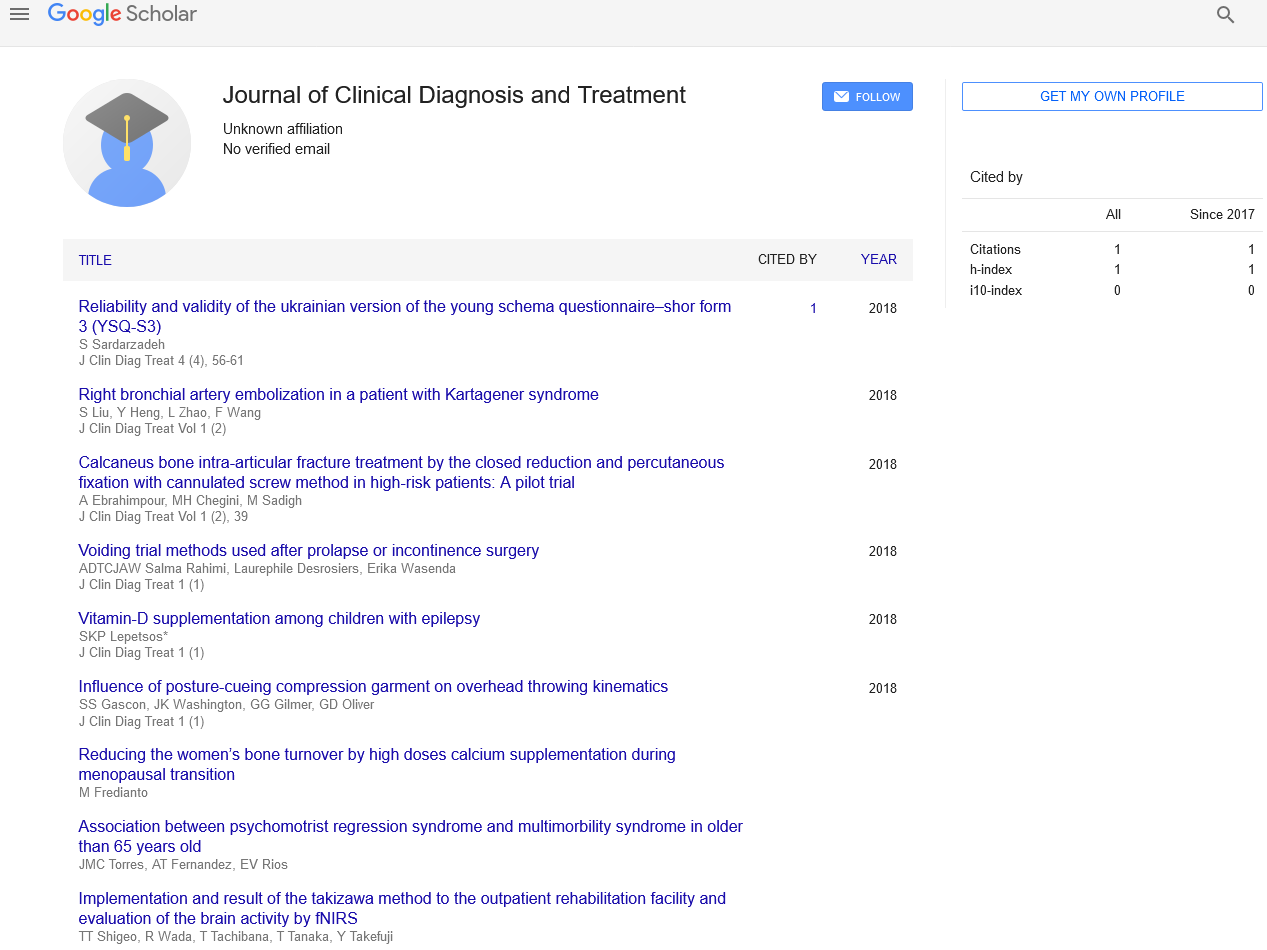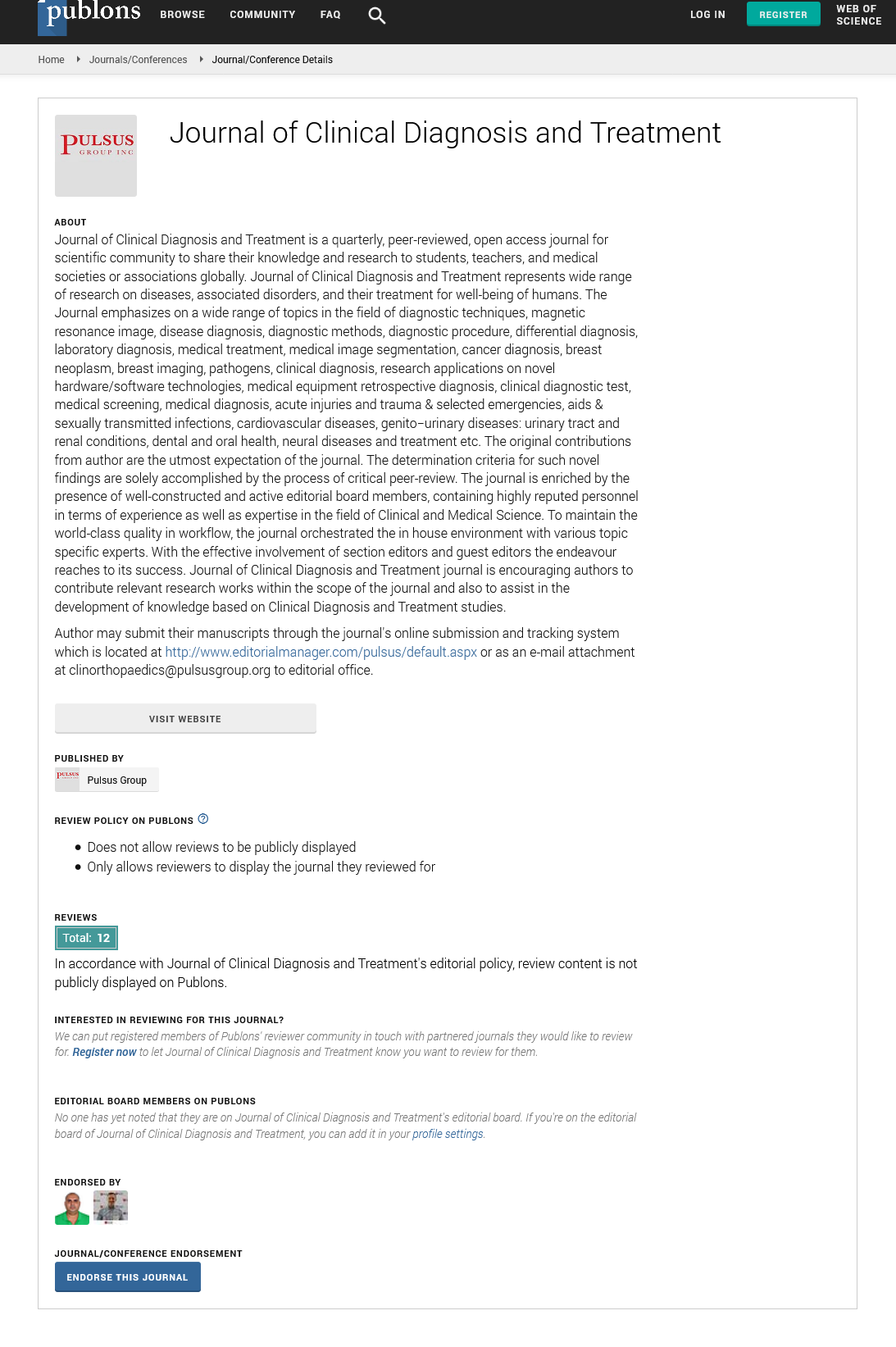Indian pharma industry despite progress, challenges remain
Received: 04-Feb-2023, Manuscript No. puljcdt-23-6262; Editor assigned: 06-Feb-2023, Pre QC No. puljcdt-23-6262(PQ); Accepted Date: Feb 18, 2023; Reviewed: 10-Feb-2023 QC No. puljcdt-23-6262(Q); Revised: 12-Feb-2023, Manuscript No. puljcdt-23-6262(R); Published: 28-Feb-2023, DOI: 10.37532/puljcdt.2023.5(1).01-02.
Citation: Bharati K. Indian pharma industry despite progress, challenges remain. J Clin Diag Treat. 2023; 5(1):1-2
This open-access article is distributed under the terms of the Creative Commons Attribution Non-Commercial License (CC BY-NC) (http://creativecommons.org/licenses/by-nc/4.0/), which permits reuse, distribution and reproduction of the article, provided that the original work is properly cited and the reuse is restricted to noncommercial purposes. For commercial reuse, contact reprints@pulsus.com
Abstract
The Indian pharmaceutical industries having huge impact in many therapeutic industries for example: Diagnostic firm, drugs industries, vaccines research and many more. Several biotechnology sector regain its growth over past two years with greater heights. Several agencies such as USA, UK and Europe, communicating for a need of drugs , vaccine and due to this pharmaceutical platform are wider in India and helping its economical growth as well.
Keywords
Pharma, Biotechnology, Drugs, Vaccines
Introduction
The Indian pharmaceutical industry is a multi-billion-dollar enterprise. Many aspects of therapeutics fall within its purview, including diagnostics, drugs, and vaccines, among others. The Indian biotechnology sector has seen a massive growth over the past two decades and is on the verge of attaining greater heights. This sector has grown steadily and had a turnover of more than USD 80 billion in 2022, growing 14% more from 2021. In fact, over the past decade, the biotech industry has witnessed many fold increase in valuation, largely due to more Public Private Partnerships (PPP), catalyzed by funding from the Biotechnology Industry Research Assistance Council (BIRAC), an enterprise spearheaded by the Department of Biotechnology, Government of India. Notably, this has resulted in more innovative research in the area of biotechnology. The entire biotech sector has seen all-round growth, not just in the domestic market, but also the global market. This has been made possible by the collective efforts of all the stakeholders, including early-stage startups, entrepreneurs, Small and Medium-Sized Enterprises (SMEs), as well as large companies, working in a well-coordinated manner. Moreover, financing schemes for start-ups, such as the Biotechnology Ignition Grant (BIG), coupled with the availability of incubation hubs and expert mentoring support is very conducive for research. Importantly, India is one of the top 12 biotech destinations in the world, ranking only second to China in the Asian continent. It’s one of the world’s leading producers and suppliers of bio therapeutics, including vaccines and generic drugs. In terms of volume, India’s Serum Institute of India (SII) now a household name for manufacturing Covishield is the world’s largest vaccine manufacturer. India is also South-East Asia’s largest bulk producer of WHO prequalified drugs. The Indian biotechnology sector grows at approximately 15% per year and is poised to touch the USD 100 billion mark by 2025.
Currently, there are around 173 biotech companies in India that are actively engaged in the development and manufacture of generic bio therapeutics. This clearly shows the robustness of the Indian biopharma sector. Indian biopharma industry lays more emphasis on producing generics than discovering original drug candidates. This is because manufacturing generics involves significantly lower developmental costs and risks, reduced spending on R&D, reduced time-to-market, and availability of ample scientific expertise in reverse engineering. India boasts of a staggering 60,000 generic brands across 60 therapeutic categories. It also produces over 500 different Active Pharmaceutical Ingredients (API).
Since India’s independence, 75 years ago, it has overcome many hurdles and crossed many milestones. Yet there are still many more milestones to be crossed and hurdles to be overcome. Hence, there is still room for improvement. India is still lagging behind on several fronts. One of these is the paucity of world class clinical trial sites, with special reference to Phase III clinical trials. Although clinical trials are increasingly being conducted in developing countries like India, there’s a need for maintaining high standards, both scientific and ethical, in order to ensure international credibility. Moreover, the drug regulatory machinery needs to be strengthened in order to ensure that approvals flow smoothly, free of bureaucratic red tapism. Therefore, in order to be at par with the leading global drug regulatory agencies, such as America’s USFDA, Britain’s MHRA and Europe’s EMA, it is of paramount importance for the Indian regulatory milieu to be in sync with the changing landscape. Also, the molecular diagnostics sector is facing stiff competition from imported products. Finally, an additional challenge faced by the biotech sector is serving the poorest of the poor in terms of nutrition, diagnostics, and healthcare delivery. Despite novel innovations like telemedicine that have greatly facilitated healthcare delivery to hard-to-reach places, basic necessities, such as good nutritious food, safe drinking water, and proper sanitation are still lacking in remote areas in India. Hence, there is an urgent need for more social mobilization with the help of NGOs, which work at the grassroots level and therefore, have a better grasp and understanding of the ground level realities.
Importantly, there is a need for social innovation through involvement of all stakeholders, including community participation, for an all-round collective effort for poverty alleviation. Therefore, in essence, if we miss the poor, we miss the point!






